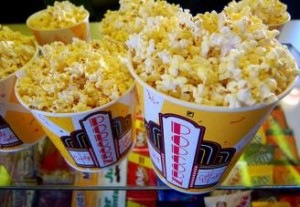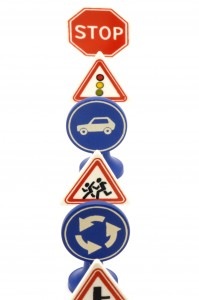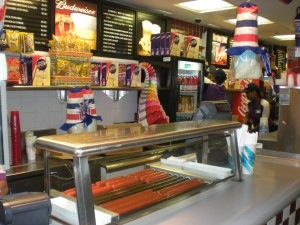
Are You Really Hungry?
It’s summertime and the living is easy. Picnics, barbecues, a sandwich at the beach are often the order of the day. And what about the ice cream cone, the beer with the burger, the peach pie, and the toasted almond from the Good Humor truck? Vacation often means sun, sand, and eating – whenever. Living is easy, unstructured, and calorically dangerous.
Vacations and free and easy summer days spawn classic scenarios for mindless versus mindful eating. Mindless eating often happens when there is no “structure” and a lack planning – when you give into “head hunger” as opposed to actual physical hunger. When you’re faced with groaning buffet tables, holiday spreads with food on every flat surface, and endless passed hors d’oeuvres at an outdoor wedding, do you have a clue about how much – or even what — you have popped in your mouth?
Why Do You Mindlessly Eat?
Hunger doesn’t prompt most people to overeat. Instead, overeating situations are usually created by family, friends, plate size, packaging, lighting, candles, smells, distractions, environments, and feelings. According to the Mindless Eating website, two studies show that the average person makes about 250 food decisions every day – like deciding between white or whole wheat; sandwich or salad; grilled chicken or tuna; half or whole; kitchen table or chair in front of the TV. That’s about 250 daily opportunities to be mindful or mindless.
What’s Different About Mindful Eating?
Mindful eating means avoiding the shove it in your mouth, non-thinking kind of eating and encourages slower, more fully focused eating based on hunger and your body’s need for food. Armed with a plan rather than attacking whatever is edible, you choose carefully, eat more slowly, and savor your food — not gobbling it as part of multi-tasking, grab and go, or a race to the finish line.
Mindful eating doesn’t mean eating with your back straight, elbows off the table, using the correct fork. It means being mindful: conscious and aware of your choices and your food. You can eat anywhere and be mindful – mindfulness and a plan for what and how much you eat are not dependent on your kitchen table or a restaurant menu. You can be mindful at the beach, at a street fair, and at the office, too.

Stomach Versus Head Hunger
Mindless eating is often prompted by head hunger while mindful eating is largely associated with stomach hunger.
Head hunger is the compulsion to eat when your body isn’t physically hungry — often in response to a learned behavior: i.e., it’s noontime so I have to eat, doesn’t matter how I feel or if I’m hungry. Head hunger comes on suddenly and often takes the form of cravings, eating when you’re not hungry, eating when you think you should be eating, and mindless snacking. It happens at any time, with no physical symptoms, and includes time cues and sensory triggers, like smell, taste, or texture. Obsessing about food, habits (like watching TV, working on the computer, or driving), emotional or personal triggers, and cravings can make you think that you’re hungry when you’re really not.

Physical hunger, or stomach hunger, comes on slowly and usually happens two to four hours after you’ve last eaten. With true stomach hunger you may have an empty or grumbling stomach, lightheadedness, hand tremors, fatigue, or a headache. It’s your body’s way of telling you that it needs fuel and that it’s time to eat. You’re usually satisfied with almost anything – unlike the frequent cravings for sugar, salt, fat that occur with head hunger.
SocialDieter Tip:
Head hunger will eventually go away if you ignore it. Your body is not telling you it needs food for sustenance, rather, your head is talking to you, sometimes quite loudly. With head hunger, try to put off grabbing some food by distracting yourself and ignore it until it goes away. Often a cup of tea or coffee or a glass of water will do the trick as well as some distracting behavior. If your head hunger is screaming at you it may be tough to ignore. If you need to eat something ask yourself when you last ate. If it’s approaching three hours you might be physically hungry in which case you can’t ignore it and it won’t lessen with time. When you eat mindfully you are aware of stomach (physical) hunger versus head (emotional) hunger. You tune into your body’s signals about what, when, and how much to eat, and when to stop eating because you are approaching full and not because your plate its empty.






